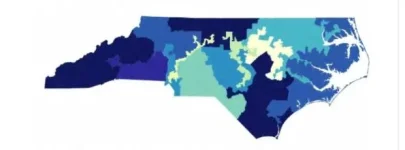- Joined
- Dec 3, 2009
- Messages
- 52,046
- Reaction score
- 34,013
- Location
- The Golden State
- Gender
- Male
- Political Leaning
- Independent
[h=1]Pennsylvania Supreme Court Strikes Down State's Congressional Map, Saying It Illegally Benefits GOP[/h]
Seems to me that there are a lot of congressional maps that benefit either Republicans or Democrats "clearly, plainly, and palpably," and need to be re drawn by a non partisan entity so as to make elections more fair and congressional seats less secure.
The Pennsylvania Supreme Court on Monday ruled that the state’s congressional map went so far to benefit Republicans that it “clearly, plainly and palpably” violated the state constitution.
Seems to me that there are a lot of congressional maps that benefit either Republicans or Democrats "clearly, plainly, and palpably," and need to be re drawn by a non partisan entity so as to make elections more fair and congressional seats less secure.


